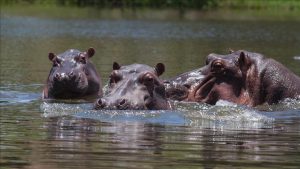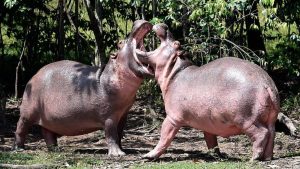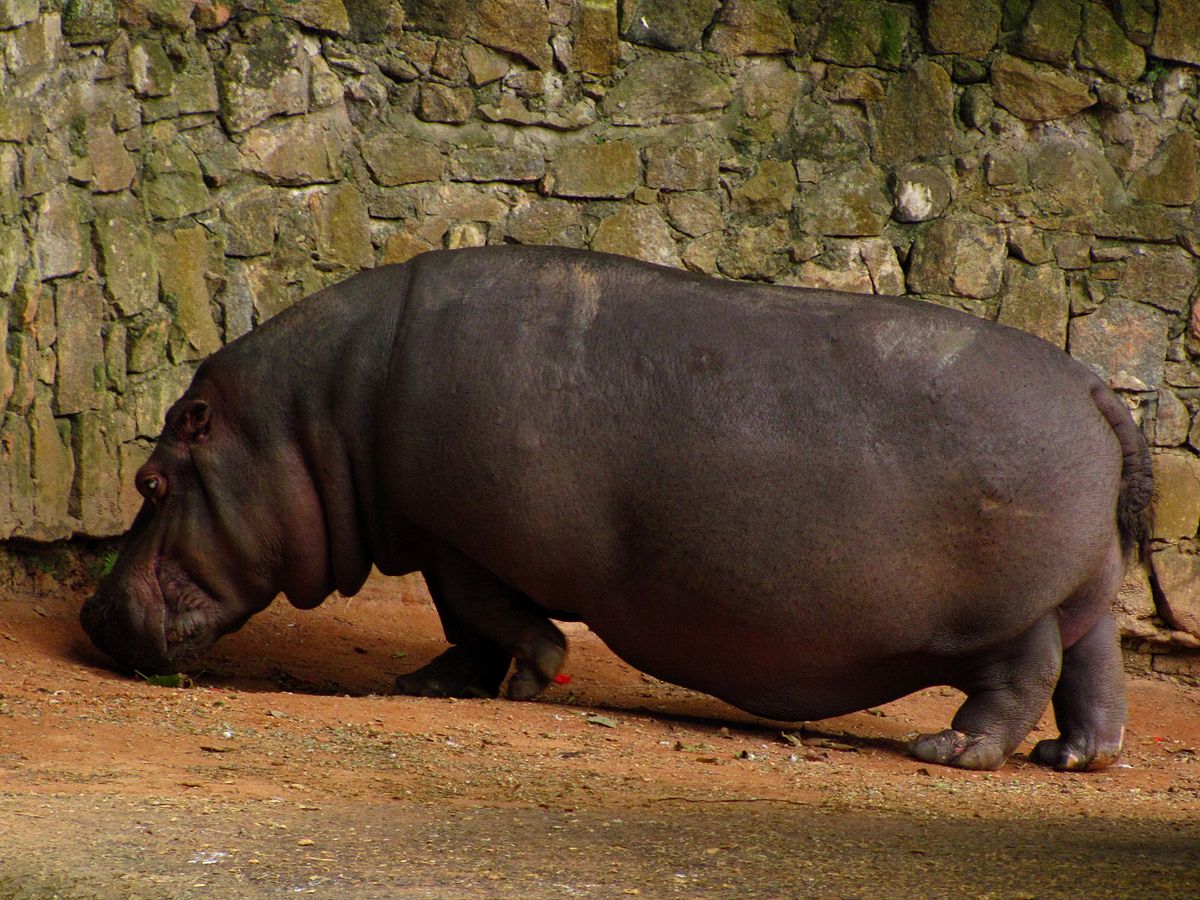While not a species native to the country, so called ‘Colombian hippos’ are real in a sense. Thanks to a surprising source, there is actually a large population of them.
Pablo Escobar, the notorious criminal, is responsible for a population of hippos in Colombia that is now entering three digit territory. This may not seem like a large amount, but it’s dangerous all the same.
Why are they there?
For those who don’t know, let me give you a very simple crash course on Pablo Escobar. Alternatively if you’re over 15, watch Narcos on Netflix (a show all about Mr. Escobar’s various criminal exploits).
Essentially, Pablo Escobar was responsible for a mass amount of cocaine production and distribution, a very dangerous and very illegal drug.
I also want to put forward a disclaimer that i condone NONE of Pablo’s actions. Actions such as smuggling cocaine using exotic animals.

That’s where the hippos come in. Among another 1,200 species of exotic animal such as elephants, giraffes, camels etc, Pablo had 4 hippos. All of these were used for the purposes stated above, as you probably surmised.
”Four Isn’t many at all!” I hear you say, well it wasn’t. Following his death in 1993, said hippos escaped and continued breeding and growing their foreign population size in unnatural territory to the size it is today. In the last eight years alone, it has gone from 15 to somewhere between 65 and 80.
Before i continue, let us take a moment to think about that. Because one man had 4 hippos in a zoo that acted as a front for his cocaine empire, there is now a rampaging herd of 80 invasive Colombian hippos terrorising the Colombian ecosystem. Isn’t the world insane sometimes.
But why are Colombian hippos dangerous?
Introducing a new species into any environment can cause a variety of problems. It impacts the natural food chain, the habitats of local wildlife and several other factors.

Take squirrels for example. Before the 20th century, the United Kingdom had only red squirrels. However, in the early 1900’s we began importing grey squirrels which very rapidly spread. Not only did they steal all of the red squirrel’s resources, but they also carried diseases that killed the reds but not greys. Combine these factors, and you have a classic example of an invasive species reaping havoc.
Now, getting back to hippos. A hippo’s natural predators include Nile Crocodiles, lions and spotted hyenas, all of which often prey on adolescent hippopotami. Since none of these are found commonly in Colombia, Colombian hippos have no natural predators. This means that no species of animal offers an external control on their population siz.
As I said before, there are currently between 65 and 80 hippos, potentially more and with estimates of the population rising to over 400 in the next couple of years.

Colombian hippos pose a threat to biodiversity as their feces changes he composition of local rivers and this could have a very damaging effect on other species. Other species such as the manatee and capybara, both native to Colombia.
It seems strange that one man smuggling a class-A drug inside of 4 hippopotami could lead to the endangerment of an entire ecosystem, but sometimes that’s how bizarre the animal kingdom is
Extra information
Animal-Club provides animal parties or animal handling workshops. You will be able to see, learn and interact with many wonderful animals with the help of our presenters. Our mobile zoo has many friendly animals such as rabbits, tarantulas, geckos, vinegaroons and more, perfect for an animal party. We can also come over to your school for an animal school visit or arrange for an animal workshop with us where the children can learn about looking after animals and animal behaviour, and have fun too.



